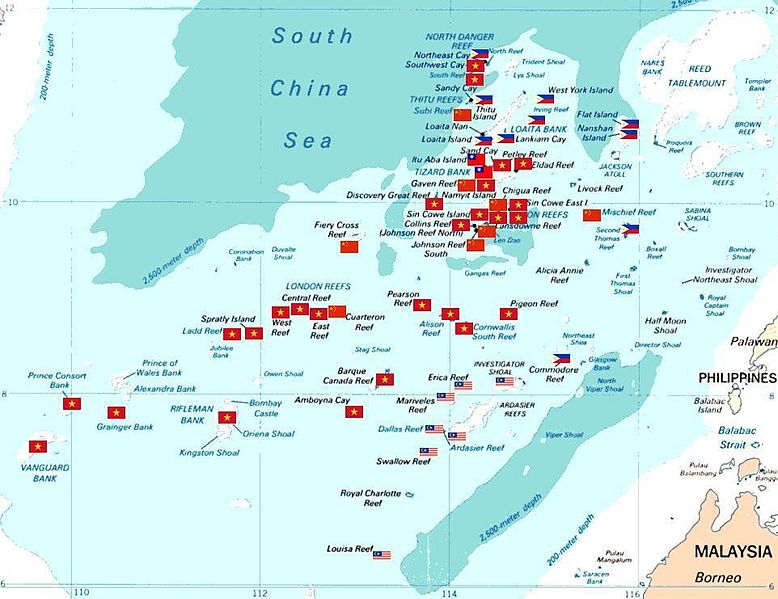The Royal Malaysian Air Force deemed the mission over the South China Sea a “threat to national sovereignty and aviation safety.”
BY
THOMAS NEWDICK JUNE 1, 2021
he Royal Malaysian Air Force has reported a “suspicious flight” into international airspace off the coast of eastern Malaysia by no fewer than 16 Chinese military aircraft. The aircraft, which reportedly mainly consisted of People’s Liberation Army Air Force long-range transports, were intercepted by Malaysian
Hawk Mk 208 light combat aircraft.
While this is not the first such incident, it appears to be by far the biggest in recent years. According to a statement from General Dato’ Sri Ackbal Bin Hj Abdul Samad, the commander of the Royal Malaysian Air Force, or RMAF, the Chinese aircraft were detected as they entered part of the Malaysian exclusive economic zone covered by the Kota Kinabalu Flight Information Region (FIR), one of the two in the country, and as they were approaching Malaysian national airspace.
RMAF
One of the PLAAF Y-20 transports intercepted by the RMAF.
The statement from the RMAF says the service was alerted to the PLAAF aircraft by radar from the service’s Air Defense Center in Sarawak at 11:53 am local time. The Chinese aircraft were reportedly flying in a long trail formation, each separated by around 60 nautical miles. They changed direction once over the Luconia Shoals, a reef complex in the contested
South China Sea, and then headed back toward the Chinese mainland.
Information provided by the RMAF indicates the PLAAF aircraft were flying at an altitude of between 23,000 and 27,000 feet and a speed of 290 knots as they passed from the Singapore FIR into the Malaysian exclusive economic zone, before approaching to within 60 nautical miles of Sarawak province, on Malaysia’s eastern coast. There is no evidence that they violated Malaysian airspace.
The RMAF says it made “several attempts” to call upon the PLAAF aircraft to contact Kota Kinabalu Flight air traffic controllers, but no response came and when they entered the FIR it scrambled Hawk Mk 208s at 13:33 pm local time. The RMAF jets were standing on alert at Labuan Air Base in northeast Malaysia, the closest fighter base to the incident. The Hawks intercepted and performed a visual identification of the aircraft, which comprised
Ilyushin Il-76 and
Xian Y-20 transports, although
some sources claim that other, so far unidentified types, were part of the formation.
RMAF
The route taken by the Chinese transport aircraft as they headed toward the coast of east Malaysia, before turning back. Labuan Air Base is also marked with a green circle.
“This incident is a serious matter against the threat of national sovereignty and aviation safety based on the density of air traffic in the airline route in the Kota Kinabalu Flight FIR,” a statement from the RMAF read. “The Ministry of Foreign Affairs has taken note of this matter through the Ministry of Defense.”
The Chinese embassy in Kuala Lumpur countered by saying the aircraft were conducted routine flight training and “strictly abided by” international law, without violating any other countries’ airspace.
RMAF PLAAF Y-20 seen from the cockpit of one of the intercepting RMAF Hawks.
“China and Malaysia are friendly neighbours, and China is willing to continue bilateral friendly consultations with Malaysia to jointly maintain regional peace and stability,”
Reuters reported a Chinese embassy spokesperson saying.
The waters off the east coast of Malaysia are already hotly contested, with China, Malaysia and Vietnam all having claims on the extended continental shelf that contains oil and gas reserves.
In the past, this friction have led to
maritime standoffs involving vessels from all three nations, among them ships from the China Coast Guard which have
reportedly harassed Malaysian oil and gas work. This is carried out by the country’s state-owned Petronas company, within the Malaysian exclusive economic zone but also within areas jointly claimed by the other two countries.
In particular, the aforementioned Luconia Shoals have been the focus of tensions and China reportedly has vessels monitoring this area
almost permanently. Another area rich in natural resources, the shoals fall within Malaysia’s exclusive economic zone but also claimed by China and Taiwan. The area is routinely patrolled by the Malaysian Coast Guard, RMAF, and Royal Malaysian Navy.
In the past, this friction have led to
maritime standoffs involving vessels from all three nations, among them ships from the China Coast Guard which have
reportedly harassed Malaysian oil and gas work. This is carried out by the country’s state-owned Petronas company, within the Malaysian exclusive economic zone but also within areas jointly claimed by the other two countries.
In particular, the aforementioned Luconia Shoals have been the focus of tensions and China reportedly has vessels monitoring this area
almost permanently. Another area rich in natural resources, the shoals fall within Malaysia’s exclusive economic zone but also claimed by China and Taiwan. The area is routinely patrolled by the Malaysian Coast Guard, RMAF, and Royal Malaysian Navy.
XU ZHENG/WIKIMEDIA COMMONS
Five RMAF Hawk Mk 208s, of the type involved in the interception, led in formation by a two-seater.
The tensions in the South China Sea region have also involved the United States, leading to encounters between
American and Chinese naval forces, including
a near-collision between warships from the two countries in 2018. China’s expansive claims
over virtually the entire body of water are rejected by every other country in the region, and most of the international community, too.
As to the precise purpose of the latest aerial maneuvers by the PLAAF, the mission seems to bear the hallmarks of a readiness exercise by the service’s strategic transport fleet and there seem to be parallels with the kinds of
mock assaults that are flown by U.S. Air Force airlifters, too. This branch of the air force has seen
significant expansion in recent years as Beijing seeks to reinforce its extra-territorial ambitions after many years of neglect.
.
PHOTO © 2021 PLANET LABS INC. ALL RIGHTS RESERVED. REPRINTED BY PERMISSION
Three recent views of the Xian production facility and adjacent airfield, dated May 23, 2021, apparently showing at least 18 Y-20s.
PHOTO © 2021 PLANET LABS INC. ALL RIGHTS RESERVED. REPRINTED BY PERMISSION
PHOTO © 2021 PLANET LABS INC. ALL RIGHTS RESERVED. REPRINTED BY PERMISSION
Previously, the PLAAF had only a limited ability to transport large military loads rapidly over considerable distances, but its logistical reach in the air has been expanded by first acquiring Il-76s from Russian production and then developing its own strategic airlifter, the Y-20, which you can read
more about here.
RMAF
A closer view of one of the Il-76s intercepted off the Malaysian coast.
Late last year, the first firm evidence emerged that the Y-20 was also now flying with
indigenous WS-20 turbofan engines, not only offering more power than the previous Russian-made engines but also eliminating dependency on foreign suppliers.
Regardless of the specifics of this PLAAF mission, it points to Beijing’s continuous policy of demonstrating its military force in the South China Sea and in particular its willingness to now involve strategic transport aircraft in these potentially provocative activities.
Contact the author: [email protected]
The Royal Malaysian Air Force deemed the mission over the South China Sea a “threat to national sovereignty and aviation safety.”

www.thedrive.com

 www.barrons.com
www.barrons.com



















